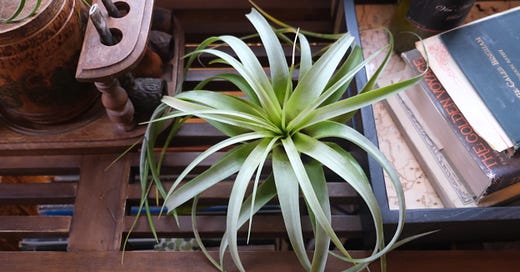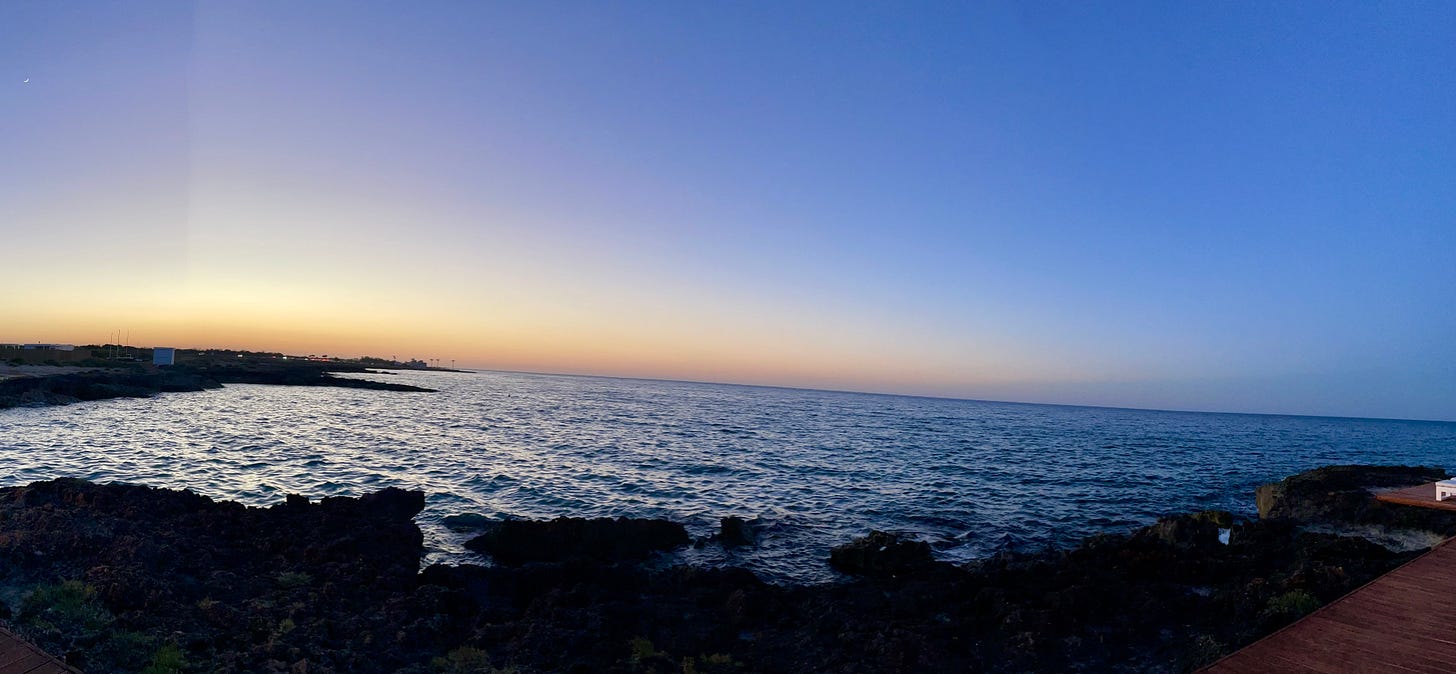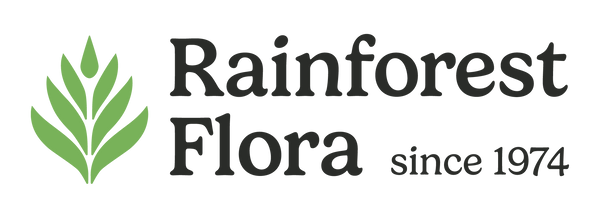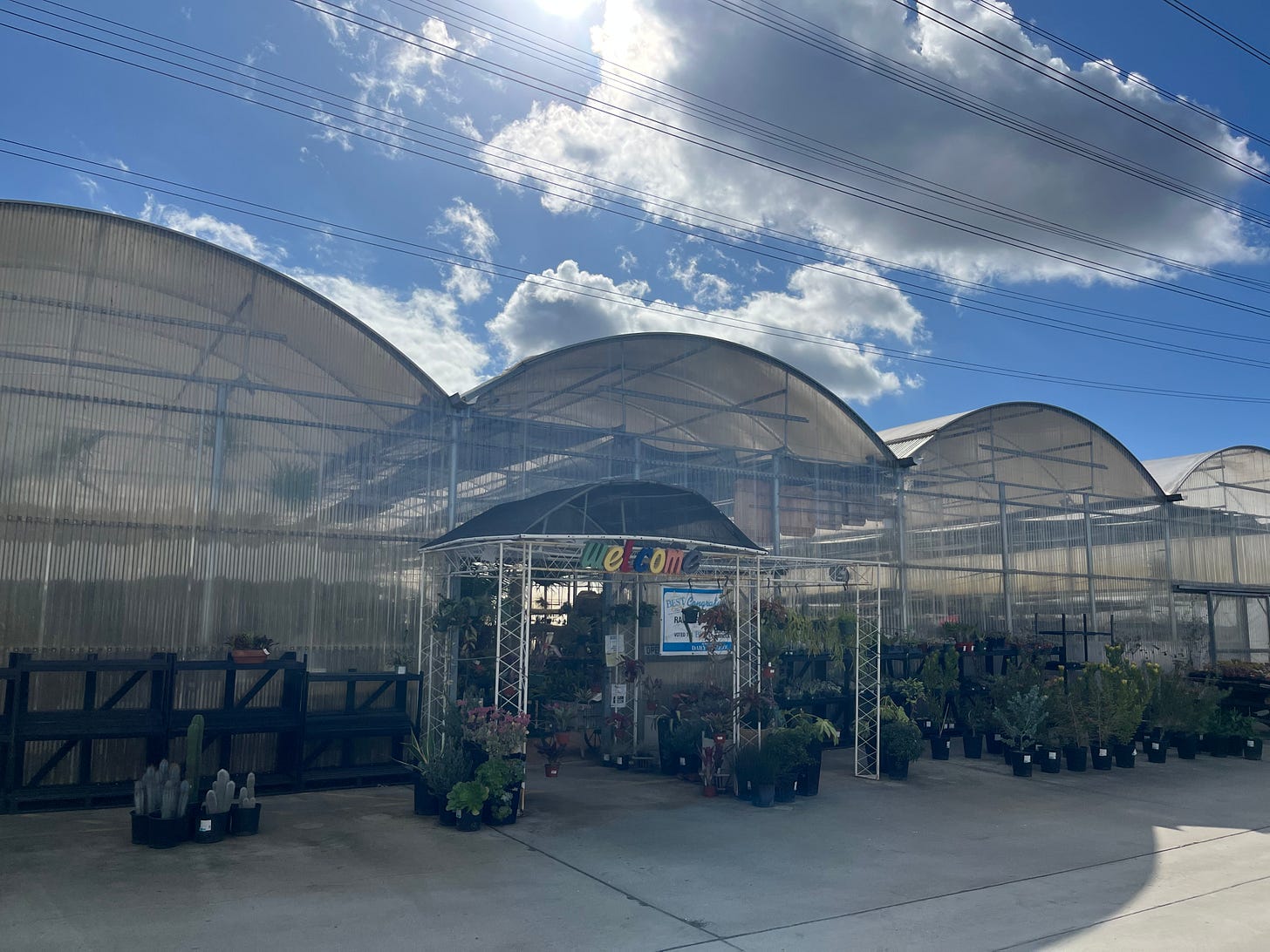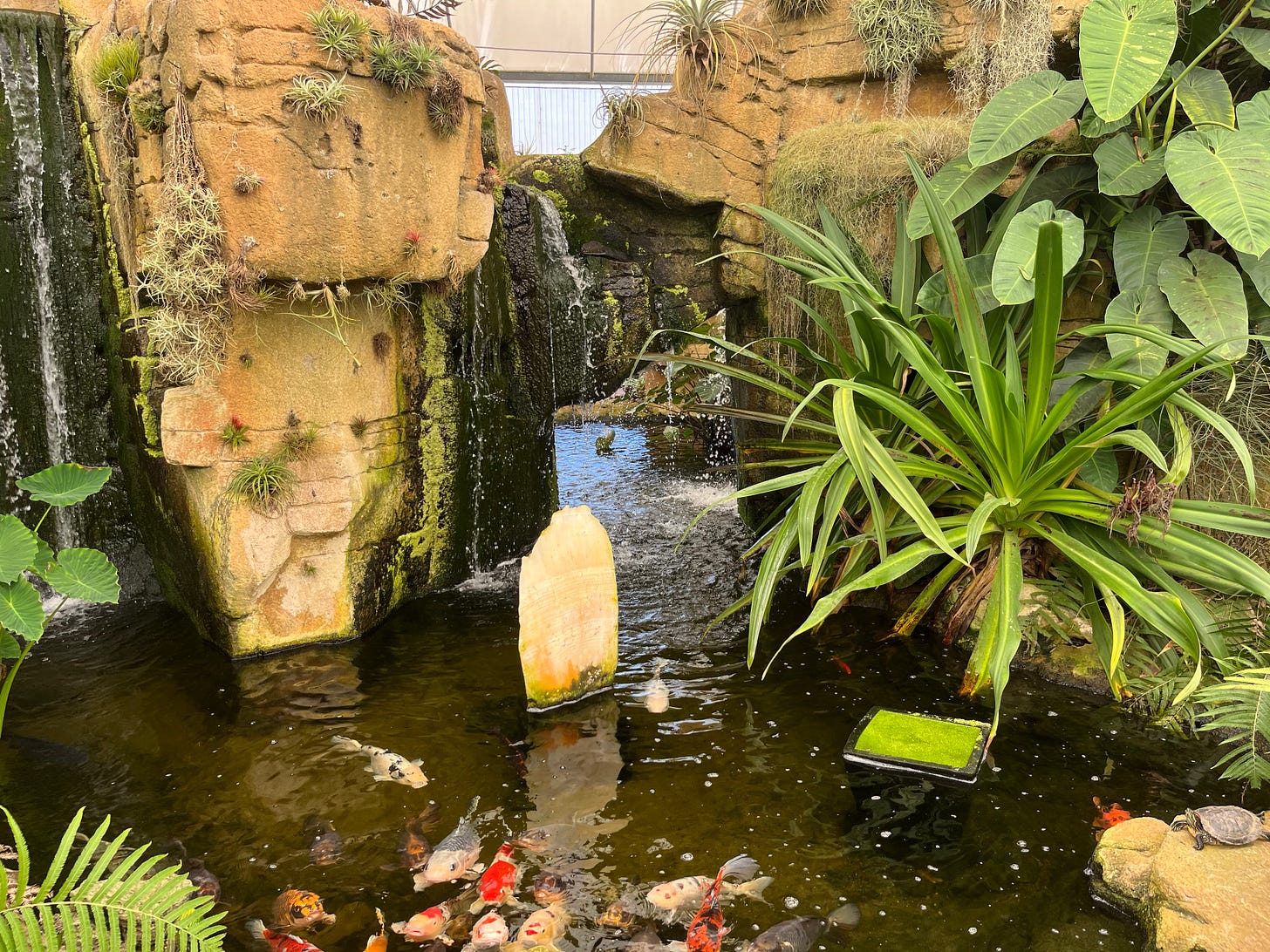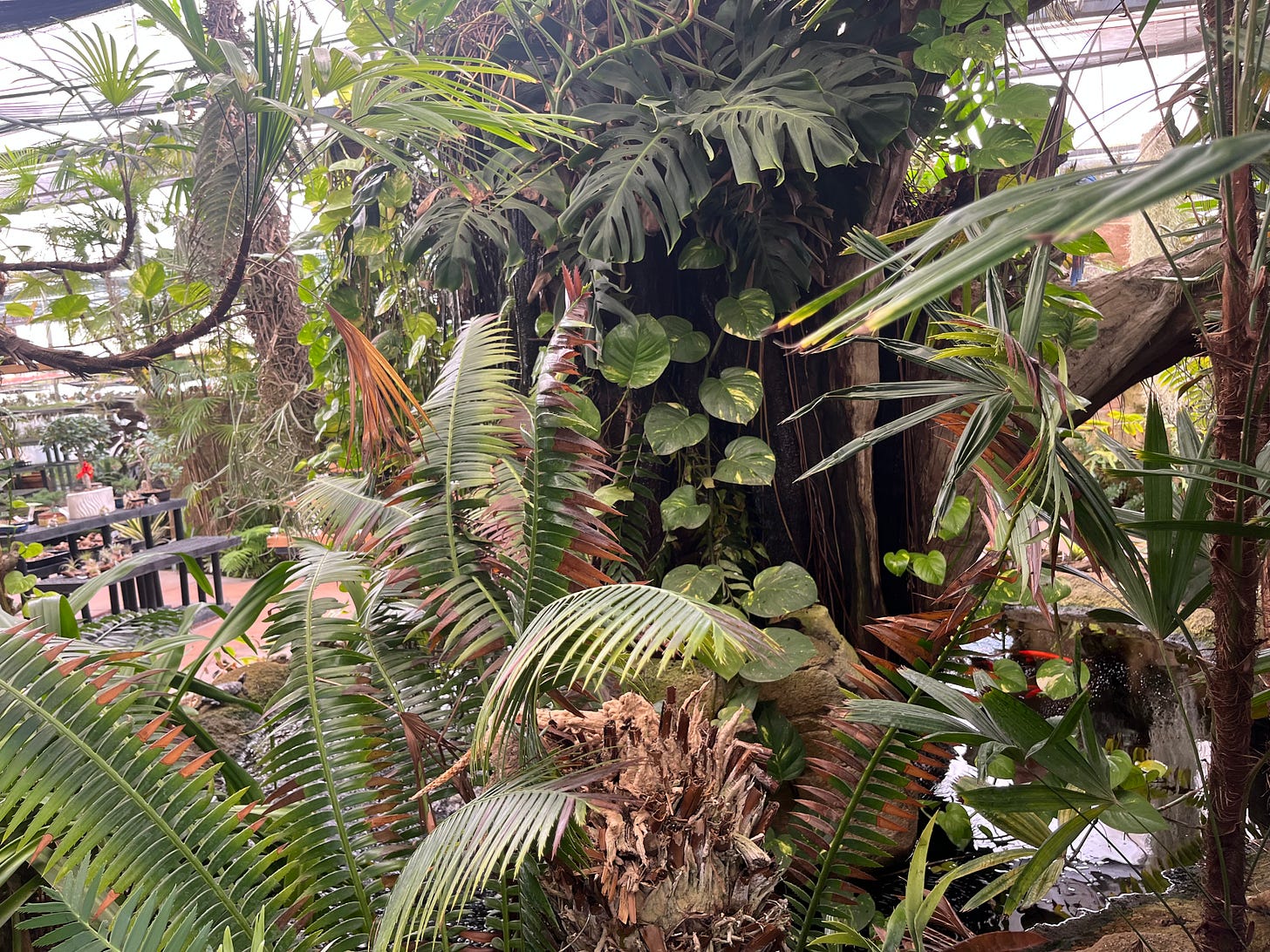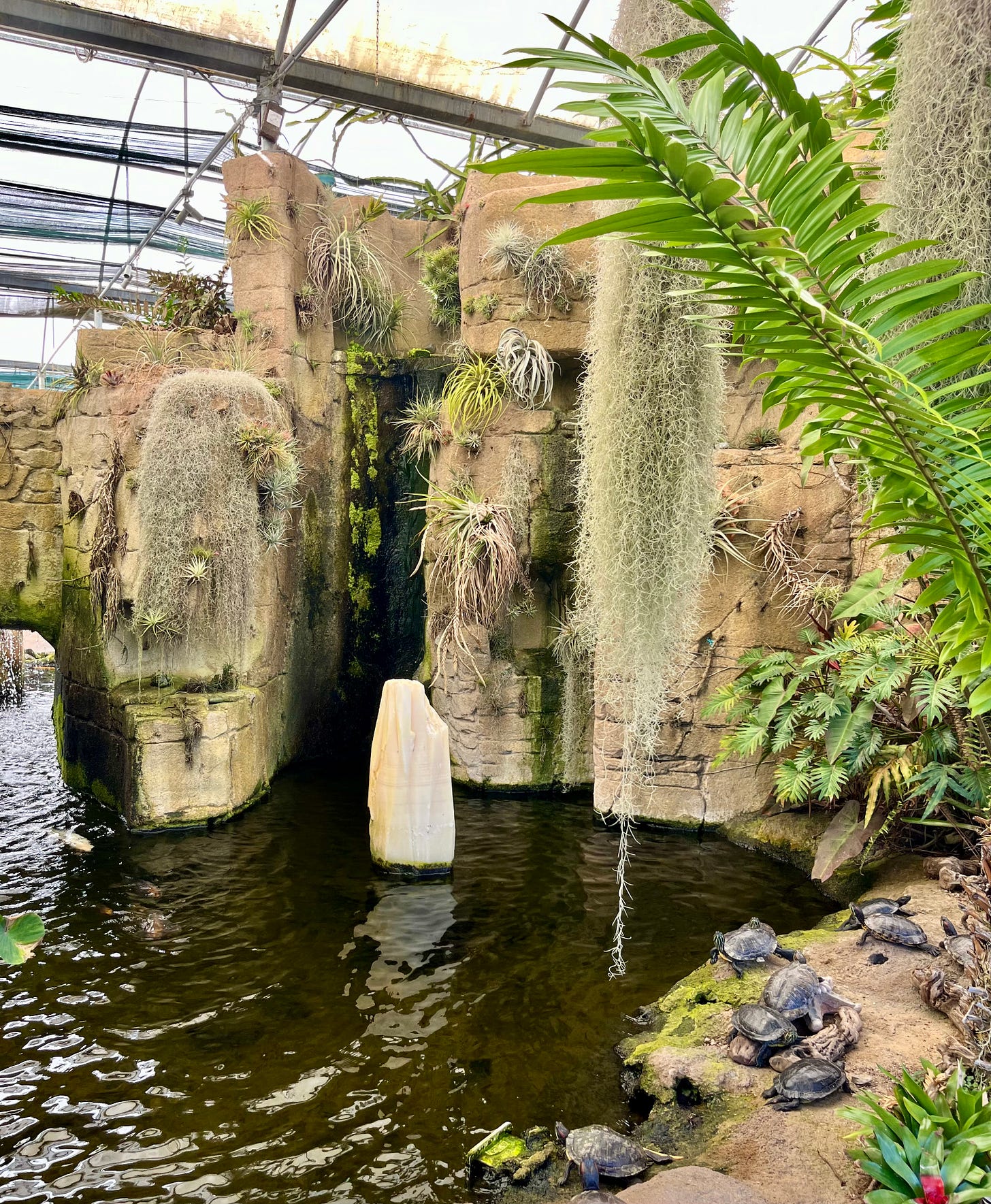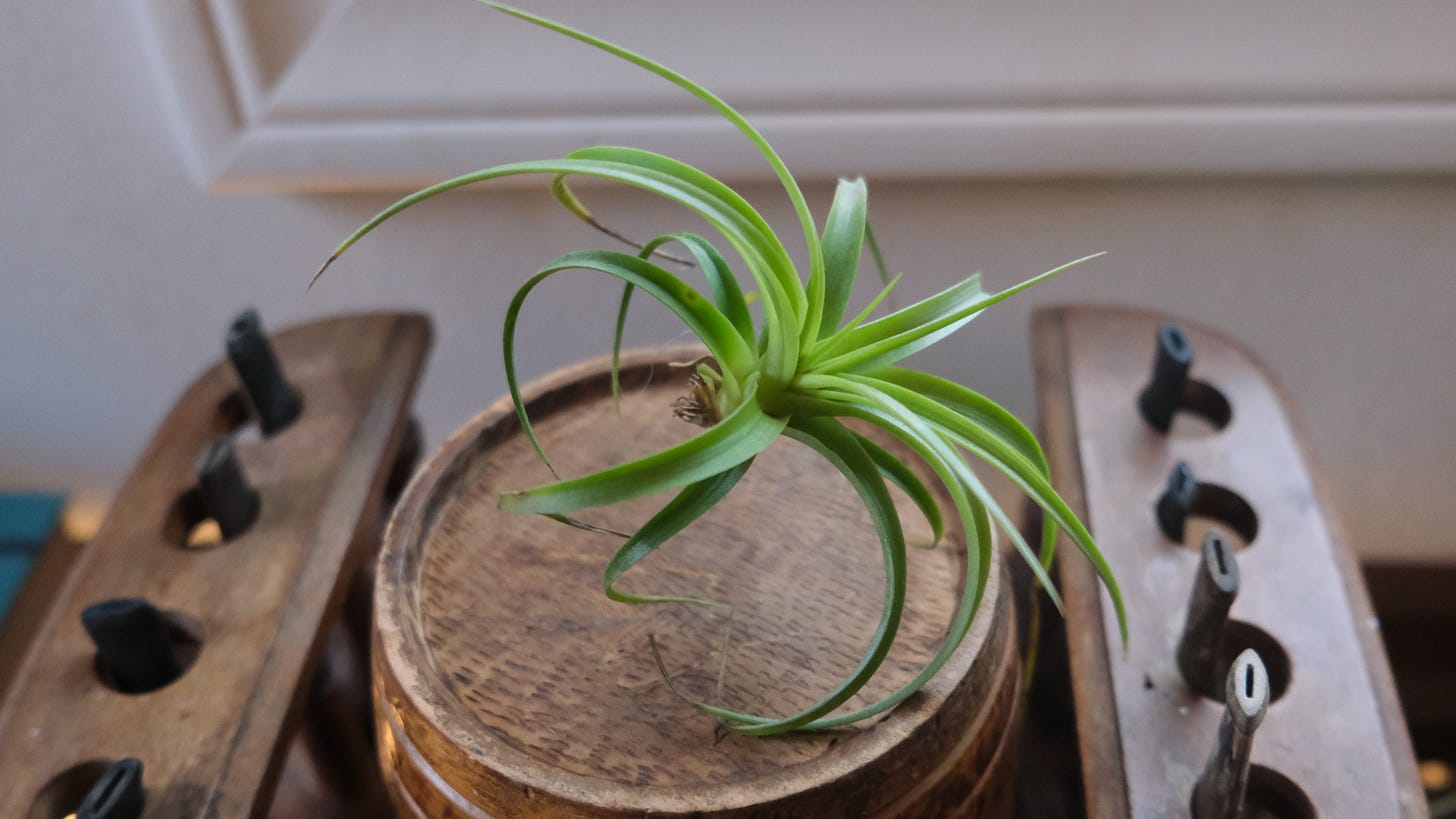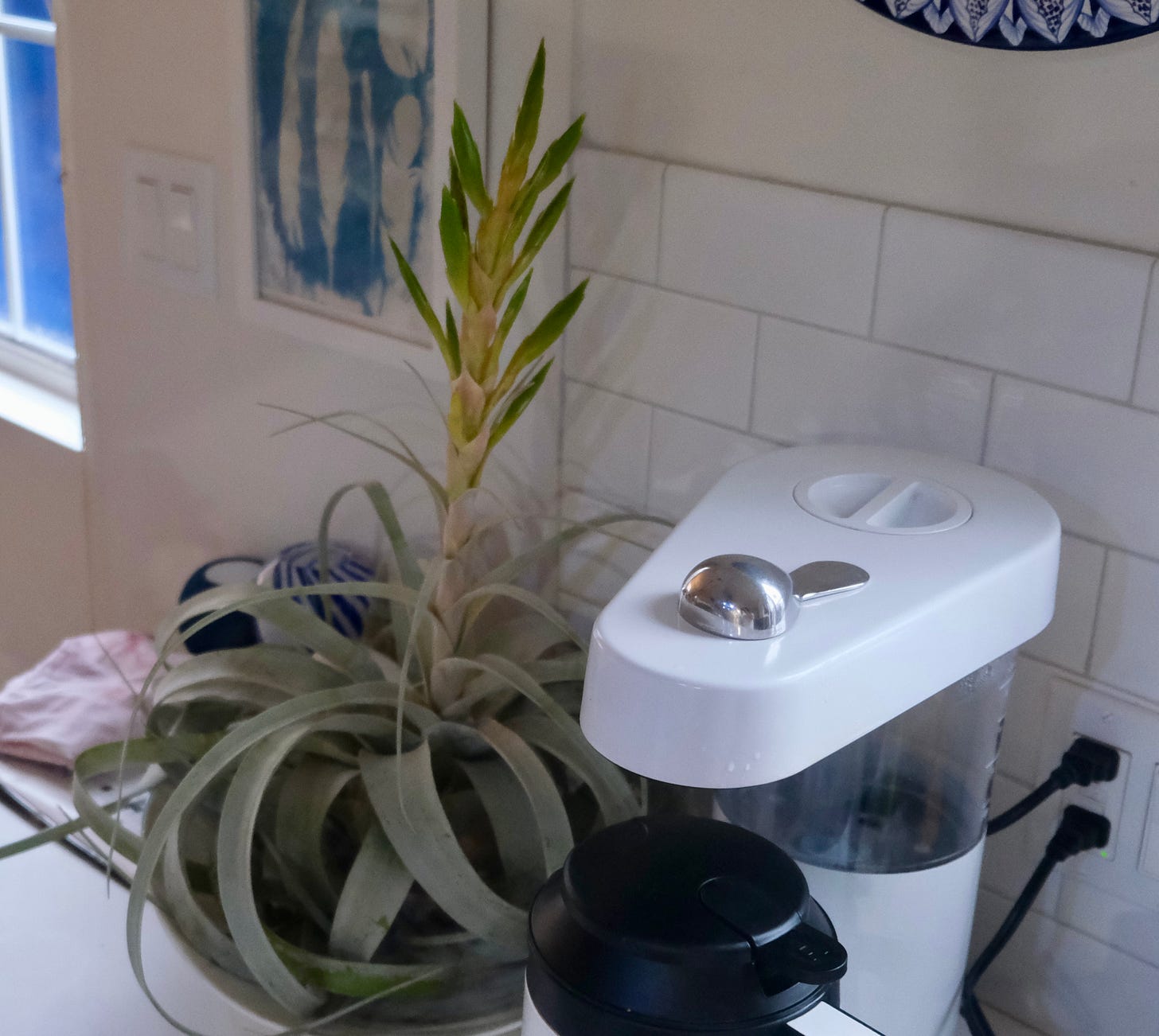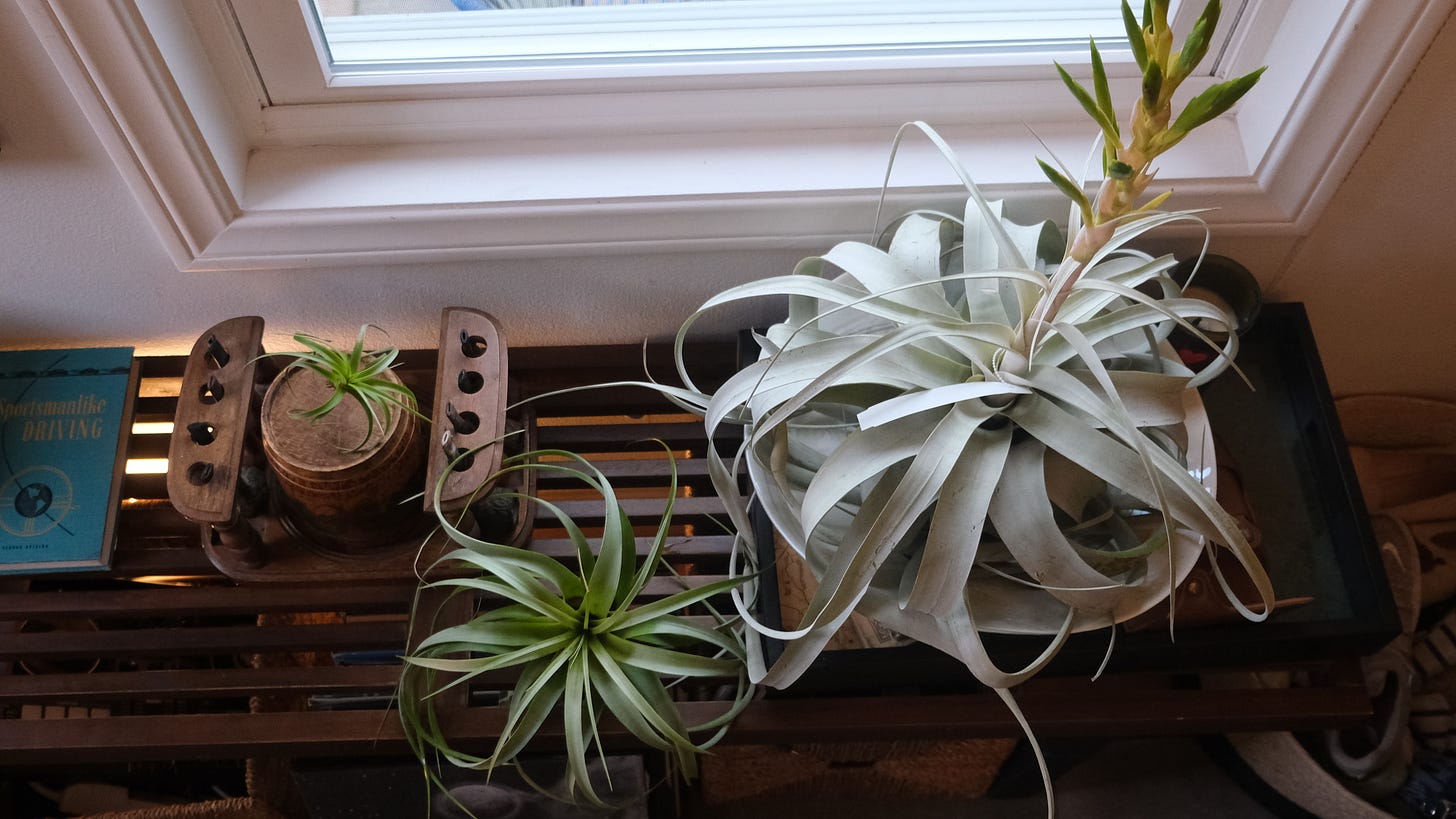Garden Aisle: Bromeliaceae, Revisited
A Visit to RainForest Flora, German Army Trainers and Dressing 'The You You Are"
It’s the return of Garden Aisle, my perennially unpopular nature and gardening content vertical. For those contemptuous of nature or just here for menswear, please scroll, down to the German Army Trainers.

I. “A Respected Nursery Concern”
I’ve owned a few bromeliads as houseplants. I’ve killed all of them to date, but I’ve also never really bothered to learn what epiphytic plants need. Now, a chance meeting from three years ago has culminated in me bringing home three very exotic Tillandsias.1
We can lay all of this at the feet of Paul T. Isley, III, who I met at a welcome drinks/cocktail hour at a wedding in Puglia in June, 2022. We were ordering drinks from the bar at the same time and we somehow started talking about the Age of Discovery and map making. I learned that he was a cultivator and distributor of Tillandsias (which is up there as one of the better careers to have in conversation) and we ended up talking about his passion for collecting rare books. It all sounds like satire years later, but this was a real guy and he was geniunely one of the most interesting people I’ve met. I doubt he would have remembered the conversation at all (what’s one more enraptured stranger to unspool your life to?), but it certainly stayed with me. I remember talking to this guy for something like 45 minutes, and my exasperated wife eventually had to politely ask me to please interact with some of the wedding guests our own age.
Some time later, I found his business card in a drawer at my house and ended up looking him up. I was dismayed to discover he was also a member of the Los Angeles Adventurers’ Club (something we did not have a chance to discuss). Talk about a missed opportunity. I made a mental note to go check out his commercial nursery, which is about 25 minutes south of where I live, and then life and other stuff got in the way.
Three months ago, I was looking at something else on the Adventurers’ Club website when I accidentally stumbled upon Paul’s obituary (from March of last year). That incredible obituary is here.
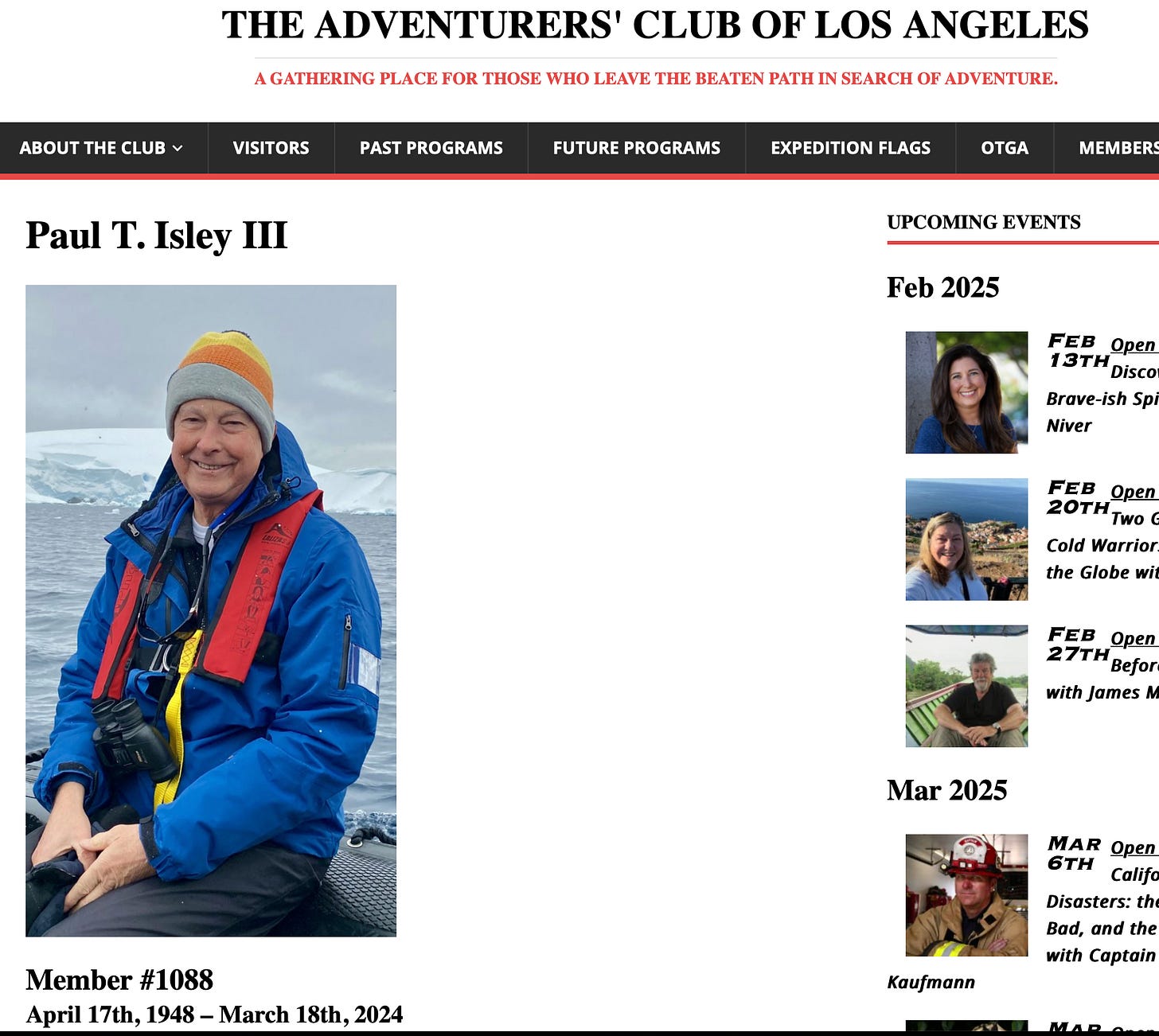
Isley started RainForest Flora in 1974 with some partners and subsequently built it into a “respected nursery concern.” Today, it is the largest commercial producer of Tillandsias in North America.
I felt strangely compelled to visit this nursery when I learned about it years ago, but the death of one of the founders created a troubling sense that I could delay no longer. As these things sometimes go, it was suddenly urgently and vitally important that I go check out these plants.
I drove down on my lunch hour, in the middle of a Tuesday. From the outside, the nursery is a little bit unassuming—it could be mistaken for the garden section of a hardware store. The inside is something else entirely—something I’m not sure I’ve encountered in any other kind of retail (maybe Bass Pro shops, with their tanks of real trout, but I haven’t been in one of those in decades).
As a showcase for its inventory of Neotropcial plants, the store has massive rock outcroppings and waterfalls inside it, complete with koi fish and freshwater turtles.
I saw the fish immediately, but it took me a bit longer to notice turtles basking about in various places. I am not sure how they avoid being struck by foot traffic (or if that’s a common occurrence).
It’s an incredible showcase for the members of the Bromeliaceae family, and I think it has the intended effect of inspiring the designer, collector, homegrower, etc. These plants have a very specific context in nature, but they can also be happily domesticated.
The sculptural and design aspects of the plants are also highlighted in various ways. Here’s a kind of hanging Tilland-delier by the entryway. The entire place is clearly a labor of love—none of this is required to sell plants (though the waterfall might make meeting the plants’ very specific moisture demands easier).
And so I brought home these three air plants, as a potential solution for some spots in my home where other plants have not worked out, but also a kind of homage to the man who was so passionate in his cultivation of them.
Here is T. rothii, which is believed to be a naturally occurring hybrid between two other plants (T. roland-gosselinii and T. jaliscomonticola). Its original range is on the Western coasts of Mexico (starting around Puerto Vallarta), but habitat loss makes it an increasingly rare species. For scale, it’s shown perched on an old tobacco barrel (the plant is about 4 inches across).
Next is T. xerographica, the largest of the air plants (routinely reaching diameters of a meter or more). Naturally occurring at higher elevations in Mexico, Guatemala and Honduras, this plant is also threatened by habitat loss (it’s in appendix II of CITES, the international agreement on flora/fauna trade management, which means it’s not endangered, but also requires close regulation to avoid a worsening of its prospects; the trees it prefers to grow on are also not priority trees in any of the reforestation programs taking place in its natural ranges).2
This completely rootless plant is somehow larger than our Ratio Six coffee machine, which I’ve included in this photo for scale. This size would take 12-18 years to attain in habitat, but can be achieved in 6-8 years in cultivation (even that shortened window ratchets up the pressure I’m feeling to keep this thing flourishing).
And finally here is the hybrid made by Paul Isley, the ‘Best in Class,’ a hybrid cultivar obtained by crossing T. xerographica with T. rothii (the two plants pictured above). Its natural range is the nursery I drive past when I am taking my family to Original House of Pancakes (never to be confused with IHOP) in Redondo Beach.
I’ll let the RainForest Flora website provide the florid prose here:
A masterful hybrid by Paul Isley combining two crown jewels of the Tillandsia world: the majestic T. xerographica, known for its sculptural form and drought tolerance, and the elegant T. rothii, celebrated for its dense silvery trichomes and spectacular blooms.
[…]
Collector's note: This hybrid represents a pinnacle of Tillandsia breeding, combining T. xerographica's renowned drought tolerance and architectural form with T. rothii's enhanced water absorption capabilities. The parent species are both from Central America but adapted to different microclimates, resulting in a hybrid that's both hardy and spectacular.
And finally here’s all three in a composite image—a tableau that transports the mind to the landscapes of Central America, while leaving some room for wonder at humanity’s ability to master and paint with some of the colors in nature’s palette. And sure, there’s an undercurrent of market demands, global trade and consumption running underneath all of that too (tulip madness, etc.). Overall, it’s a small homage to the fascinating life of Isley.
I’ll do my best not to kill them.
Editor’s note: the Rainforest Flora online shop is worth taking a spin through. They can also ship plants (even using heat packs for shipping to colder climes).
II. Spring Training
Just a few weeks ago, I posted an image of Barrack Obama wearing a pair of mystery suede trainers. It was an image I came across in 2024 and it inspired a brief hunt for what these shoes might be. They have a kind of gravitas and richness (to my eye, a correctness) that’s rare for a tennis shoe.
I had given up figuring out what the shoes were, and was subsequently served a YouTube video profiling Crown Northampton, a shoemaker out of the UK.
In my excitement, I thought I had accidentally stumbled upon the identity of the mystery shoes. On closer inspection, they aren’t the shoes 44 was wearing, but they have the right provenance and correct details to the point that they may as well have been. I think these are better. Northampton’s take on a German Army Trainer grabbed my reptile brain and has not let go. There are incredible, beautiful things out there if you leave yourself open to discovery. I’ve ordered a pair (they are made to order and take 4-8 weeks), so I’ll circle back with findings.

III. Internet Bycatch
Wherein we see what the virtual ocean has left in our illegal drift nets. I’ve had quite a few weeks to curate links here, so please enjoy.
I like this video from The Armoury’s founder Mark Cho because his approach to color and design strikes a chord of self-recognition for me.
He’s given himself the quixotic task of trying to bring home some of the colors he saw in the Dominican Republic into his spring wardrobe. It’s the kind of design synesthesia (and madness) I can immediately recognize and admire in others (not just wanting to bring home something moving and permanent from your travels, but the desire to transmute the expression of something you like from one medium to another).

Occasionally, a video like this will unexpectedly reinforce the thesis of Sublime Prosaic (to the extent this Substack ever has anything resembling one) and my philosophy around clothing. Only the artist as subject (here, as the traveler, photographer and designer) can know whether they’ve captured the right shade of blue that lives in his mind, and part of the fun is in knowing that maybe he never will. The fun is all in the trying. With proper care and intentionality, every thing can mean something, and the meaning can be as powerful to you as it is hidden to others.
And this^^^^^^ is what’s fun and worthwhile about getting dressed. It has everything to do with expressing something internal and true about yourself and nothing to do with what people want you to buy (or how to look successful, or powerful or whatever dross is being pushed by people who want your money, your attention, and a piece of your one, un-replenishable life). There’s always room to learn, copy and steal from others (and understanding the connotations and history of clothing can help), but why aspire to look like a banking scion (or a tech money moron who can afford a stylist) when you can instead look wholly yourself?

Other menswear blogs covered this weeks ago, but the New York Times gave us false hope with this provocative review of June Wattanabe’s show in Paris. It probably generated all the clicks they bargained for. With the collapse of the fashion cycle (every style, every wear, all at once), I don’t think this is the “return” of anything, but I’ve watched the younger generations wear some of the ugliest stuff from the 90s and 2000s like they discovered lost treasure, so I wouldn’t mind them co-opting some stuff that actually looked good the first time around (thank you, Kendrick Lamar, for increasing the number of makers who will offer bootcut denim in the fall).
I still follow humanity’s barely-funded efforts to translate sperm whale language. The short update is that we are still working on better suction cups for the microphones we attach to the whales (in order to get longer recordings and a better glossary/library of the whale’s calls and sounds). And what will we do if or when we can talk to the whales? I doubt we’ll stop deafening them with sonar, but maybe we’ll explain to them the importance of military ships at sea and all that.
Now Open Global Rights (an “independent platform for analysis and opinion on international human rights issues, hosted by the Center for Human Rights and Global Justice and the Future of Rights Program at NYU School of Law”) has released a report outlining efforts to formulate ethical guidelines for conversing with nonhuman animals. Not too hard to imagine these frameworks also applying to certain kinds of nonhuman, non-animal intelligences at some point too. Everything will continue to be fuel for the human experience, but at least we’ll have an ethical framework to explain to the grist that it is for the mill.
If an SR-71 were to become sunglasses…I love the idea of these ‘Lockheed’ frames from Jacques Marie Mage, even though wearability in real life looks like elite/nonsense levels of difficulty. Lockheed employed two generations of my family, so I have a soft spot for Southern California aerospace Americana, its status as a major proponent/enabler of the perpetual war economy be damned. Twenty years from now, we might call these the ‘Palantir” frames instead and have kids born in 2020 feeling nostalgic for the simplicity of the 2030s of their youth.
I read too many different Substacks so I forget (and apologize to) whoever I read that posted this first, but this tour of Walton Goggins’ Hudson Valley family home is a delight. I know he’s just doing it to promote The White Lotus, but it’s nice to see our culture is still capable of producing bona fide stars, and some of them have exquisite taste.
For its 100th anniversary, the New Yorker has its own retrospective on a celebrity profile to consider: Lillian Ross’ 1950 profile of Ernest Hemingway How Do you Like It Now, Gentlemen?. The backstory of the profiler’s relationship to her subject is fascinating, and it’s the kind of writing (and writing about writing) that makes me regret (and feel a little insecure about) not growing up in a home that had more capital “C” culture around in the form of literature (there was Tom Clancy and John Grisham, so at least we were a reading household) and art (the music being played was about what you’d expect from a mother who was born in Los Angeles in 1962, but it was usually relegated to the background). Here’s one of the takeaways from the retrospective, and the whole thing is brutally good writing like this from Adam Gopnik:
There is a more thoroughly psychoanalytic take on it all, of a kind that Janet Malcolm, a Freudian stalwart, would have insisted on: Ross unconsciously wanted to kill her more famous friend, and she did so by holding him up to ridicule, in the disingenuous pose of merely reporting his actions. Hemingway, unable to tolerate the insult to his self-love, had no choice except not to protest—to evidence a sense of hurt would be to ratify his critics’ view of him, and to surrender to a knowledge of his own absurdity. They were, on this theory, locked in a Malcolmian Laocoön: the reporter wanting secretly to master her subject and surreptitiously mock him; the subject knowing that the moment the mockery is acknowledged the reporter has won.
An amazing assessment (made even better by referencing the beloved sculpture on display at The Vatican). I’ve seen the Ken Burns documentary so I have a general sense of Hemingway’s decline and tendency toward cliche toward the end of his career ("the lion in winter” as Gopnik terms it). Because I am daft, I still love The Sun Also Rises.
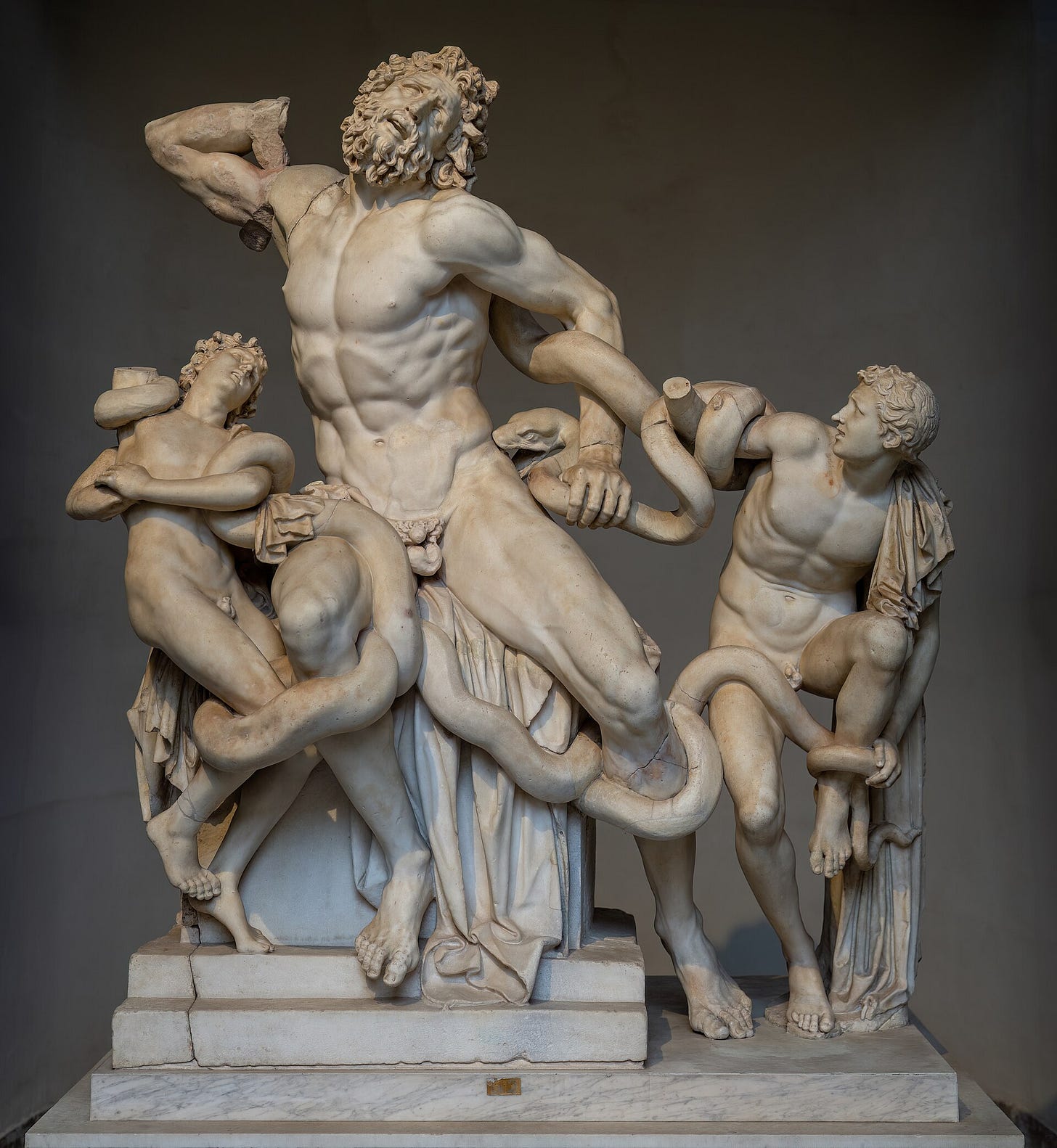
Werner Herzog, just in time for Valentine’s Day (from Burden of Dreams, the 1982 documentary following his efforts to make Fitzcaraldo). The transcript accompanies the video below, which is an abridged version of his fuller commentary:
“The birds are in misery. I don’t think they sing, they just screech in pain. It’s a land that God, if He exists, has created in anger. Taking a close look at what’s around us, there is some sort of a harmony. It is the harmony of overwhelming and collective murder. And we in comparison to the articulate vileness and baseness and obscenity of all this jungle, we only sound and look like badly pronounced and half-finished sentences out of a stupid suburban novel. And we have to become humble in front of this overwhelming misery and overwhelming fornication, overwhelming growth and overwhelming lack of order. There is no harmony in the universe as we have conceived it. When I say this all full of admiration for the jungle. It is not that I hate it, I love it, I love it very much, but I love it against my better judgment.”
Tillandsias are the family of air plants, which are epiphytic (having no roots) and mostly found in the America Neotropics.
The CITES appendix on Tillandsias also calls out people like me, who think they can keep these plants alive in “windowsill cultivation.” Further intensifies the pressure not to kill them.

